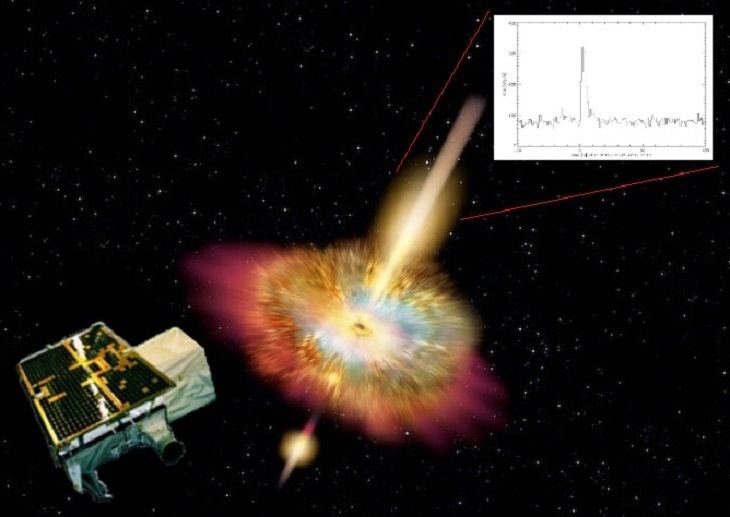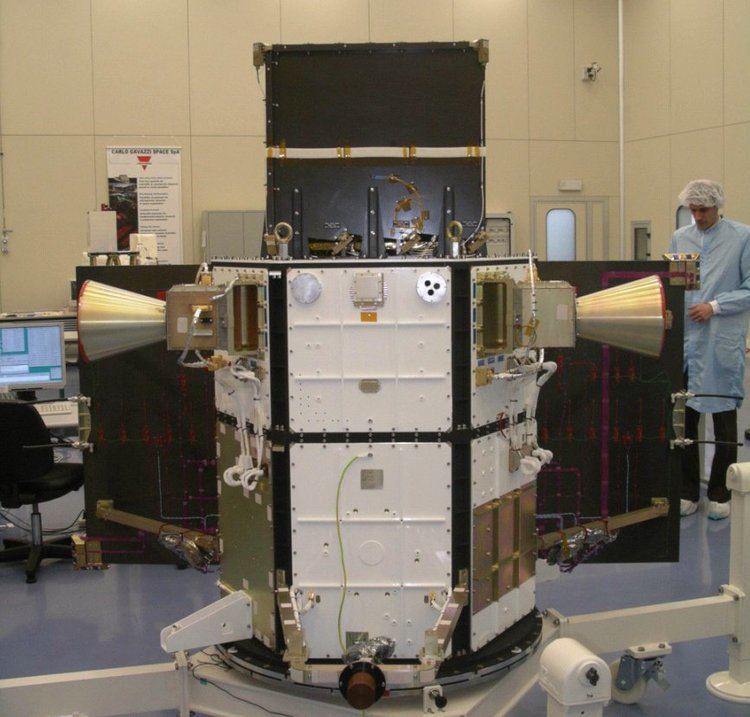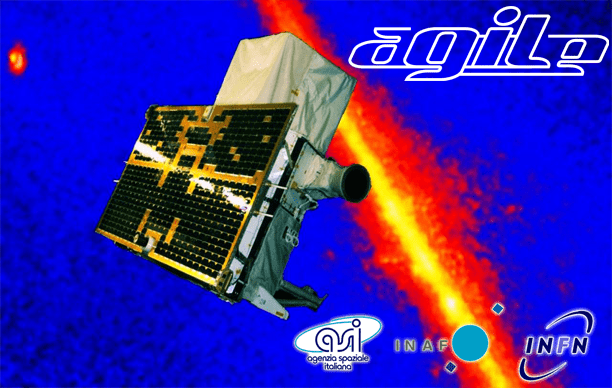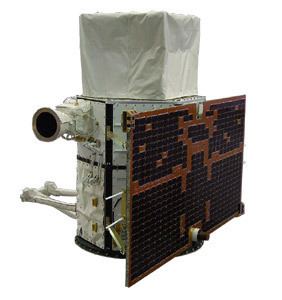COSPAR ID 2007-013A Website agile.rm.iasf.cnr.it Launch date 23 April 2007 Inclination 2.47° Launch mass 352 kg | Operator ASI SATCAT no. 31135 Mission duration 8 years Inclination 2.47° Period 1.6 hours Launch mass 352 kg | |
 | ||
Similar Fermi Gamma‑ray Space Te, Cos‑B, High Energy Transient, INTEGRAL, Compton Gamma Ray Obse | ||
AGILE (Astro‐Rivelatore Gamma a Immagini Leggero) is an X-ray and Gamma ray astronomical satellite of the Italian Space Agency (ASI).
Contents

Objectives

AGILE's mission is to observe gamma-ray sources in the universe. Key scientific objectives of the AGILE Mission include the study of:
Instrumentation

AGILE's instrumentation includes a Gamma Ray Imaging Detector (GRID) sensitive in the 30 MeV - 50 GeV energy range, a SuperAGILE (SA) hard X-ray monitor sensitive in the 18–60 keV energy range, a Mini-Calorimeter (MCAL) non-imaging gamma-ray scintillation detector sensitive in the 350 keV - 100 MeV energy range, and an Anti-coincidence System (AC), based on a plastic scintillator, to assist with suppressing unwanted background events.

The SuperAGILE SA is an instrument based on a set of four silicon strip detectors, each equipped with one-dimensional coded mask. The SA is designed to detect X-Ray signals from known sources and burst-like signals. It provides long-term monitoring of flux and spectral features. MCAL can also effectively detect high-energy radiation bursts in its energy band.
Launch and operations

AGILE was successfully launched on 23 April 2007, from the Indian base of Sriharikota and was inserted in an equatorial orbit with low particle background. On 23 April 2007, ASI made contact with AGILE; its signals were acquired by the ground station at the Broglio Space Centre near Malindi, Kenya and it was placed in a Sun-pointing mode.
Results
Some transient events detected by AGILE are associated with positions not consistent with a known source (Gamma Ray Burst) and have cosmological origins. Others are due to solar flares, while some are due to Earth atmosphere events (Terrestrial Gamma Flash).
